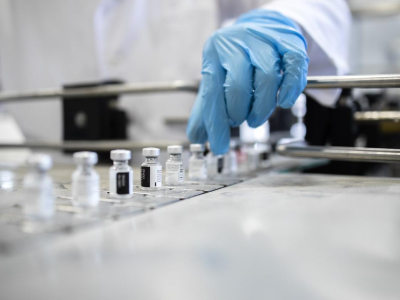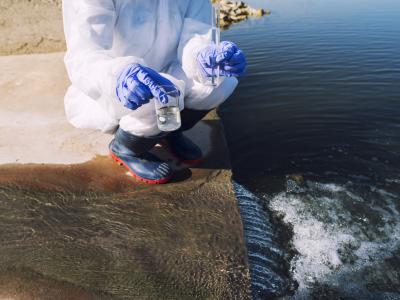Canadian E coli outbreak linked to romaine lettuce sickens 30, 1 fatally
An Escherichia coli outbreak in Canada linked to romaine lettuce now involves five provinces, with 30 cases reported so far, 1 of them fatal, the Public Health Agency of Canada (PHAC) said yesterday in an update.
In its original announcement on Dec 11, the PHAC said there were 21 cases under investigation from three provinces: Quebec, New Brunswick, and Newfoundland and Labrador. In the update yesterday, it said 9 more cases have been added, with Ontario and Nova Scotia now reporting cases.
Many of the patients said they ate romaine lettuce before their symptoms began. So far no food recalls are linked to the outbreak, and the investigation is ongoing.
Most of the patients got sick in November or December, and 12 were hospitalized. Patient ages range from 4 to 80 years old, and 70% of them are female.
Dec 14 PHAC update
New H5N6 avian flu reassortant detected in Dutch wild birds
In the latest avian flu outbreak developments, the Netherlands today said the new highly pathogenic H5N6 reassortant was detected in mute swans found dead in a wetland area, and the Dominican Republic, Taiwan, and South Africa each reported new outbreaks involving different strains, some of which pertain to events in September and October.
In a report to the World Organization for Animal Health (OIE), Dutch veterinary officials said seven wild swans were found dead on Dec 9 at two different locations in Gelderland province in the east central part of the country. Tests revealed that the virus is an H5N6 reassortant, presumably similar to the virus—a mix of H5N8 and a low-pathogenic Eurasian avian flu—that has recently turned up in Dutch poultry, as well as in birds from Greece, South Korea, Japan, and Taiwan.
In an update today, Wangeningen Bioveterinary Research Institute said the wild birds were found along the shores of Lake Veluwe, several miles from where the reassortant was found in a recent outbreak at a duck farm in Flevoland province, according to a report translated and posted by Avian Flu Diary (AFD), an infectious disease news blog.
Dec 15 OIE report on H5N6 in the Netherlands
Dec 15 AFD post
In other reports from the OIE, two counties reported more H5N2 outbreaks, with the Dominican Republic noting the mid-October detections of the low-pathogenic form of the virus at three poultry farms in two different provinces, and Taiwan noting two recent highly pathogenic virus detections at poultry farms in Yunlin County and the city of Kaohsiung.
Meanwhile, in South Africa, the pace of new highly pathogenic H5N8 outbreaks has slowed, but the country reported one more outbreak that occurred in September at an ostrich farm in Western Cape province.
Dec 13 OIE report on low-pathogenic H5N2 in the Dominican Republic
Dec 14 OIE report on highly pathogenic H5N2 in Taiwan
Dec 15 OIE report on H5N8 in South Africa
Probing the impact of poultry market closures across 3 H7N9 waves
An analysis of human exposure to H7N9 avian influenza in China's Zhejiang province over the past three waves found that patterns haven't changed much since live poultry markets were shuttered in central urban areas and that a spike in infections during the fifth wave was mainly linked to areas where the poultry markets weren't closed, such as in suburban areas. A team based in Zhejiang province, which has the highest proportion of cases since the virus was first detected in 2013, reported their findings today in Influenza and Other Respiratory Viruses.
In an attempt to curb human illnesses, Zhejiang province in July 2014 permanently closed live poultry markets in the biggest urban areas. Across all three waves, most cases were reported from rural areas, and a similar percentage in all three waves reported exposure to poultry markets, raising poultry at home, or in occupational settings. However, during the fifth wave, the team saw a shift toward exposure at markets that weren't closed.
Researchers found no major demographic changes over the three waves that might shed light on the surge of illnesses seen in the fifth wave. However, like earlier reports from China as a whole, they did see a wider geographic distribution of cases. They also noted that an increasing proportion of rural cases were linked to contact with sick and dead poultry.
New H7N9 cases were also reported from major urban areas in Zhejiang province's fifth wave, hinting at possible illegal trade. Also, they said massive closures in central urban areas could be driving the distribution of infected poultry to markets in outlying areas. They concluded that more efforts are needed to educate the public about the risk of exposure to sick and dead poultry and that stronger surveillance is needed in rural areas. Also, they said further expansion of live poultry market closures should be considered, if possible.
Dec 15 Influenza Other Respir Viruses abstract
PAHO confirms yellow fever cases in Brazil, Peru
The Pan American Health Organization (PAHO) this week noted that both Brazil and Peru have confirmed yellow fever cases in the second half of 2017. PAHO said both countries should be closely monitored in the new year.
Since Oct 27, officials have confirmed 3 cases of yellow fever in Brazil, 2 in Sao Paulo and 1 in Rio de Janeiro state. In Sao Paulo, the Itatiba municipality was the probable site of infection, and Guapimirim municipality was the probable site of infection in Rio de Janeiro. One of the patients in Sao Paolo, a 76-year-old man, died.
A total of 43 probable yellow fever cases are still under investigation in Brazil.
Peru has had 17 confirmed and probable cases this year, including 3 fatalities. Six of the cases have occurred in the Junin department, more than in any other department.
PAHO said 2016 yielded the highest number of human and epizootic yellow fever cases seen in decades. "The observed increase is as much related to an ecosystem favorable to the dissemination of the virus as to the unimmunized populations," PAHO said.
Dec 13 PAHO report
More polio reported in Pakistan, Syria
According to the latest Global Polio Eradication Initiative (GPEI) report, health officials confirmed one new wild poliovirus 1 in Pakistan last week. The child had symptom onset on Nov 9. Also, Syria has four new vaccine-derived polio cases, all in the previously affected Deir ez-Zur governorate.
There are now six officially reported wild poliovirus cases in Pakistan in 2017. The GPEI said next week's report will contain details on another case in Balochistan province. Pakistan, along with Afghanistan and Nigeria, is one of three countries in the world where wild poliovirus is still circulating. Last year Pakistan had 18 wild poliovirus cases.
Syria now has 74 type 2 circulating vaccine-derived poliovirus (cVDPV2) cases in 2017. The most recent patient had symptom onset on Sep 21. According to the GPEI, local authorities in Raqqa will administer inactivated polio vaccine (IPV) in the Ein Esa camp, which was missed in earlier IPV vaccination activities.
In other polio news, a study yesterday in Emerging Infectious Diseases showed that during surveillance during the West African Ebola outbreak of 2014-2015, 13 cVDPV2 viruses were isolated from 6 polio patients and 7 healthy contacts. All cases were identified in Guinea.
The researchers said the main risk factor was a low vaccination rate, which was 41% in Guinea in 2014.
Dec 13 GPEI report
Dec 14 Emerg Infect Dis study












